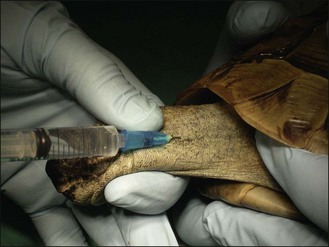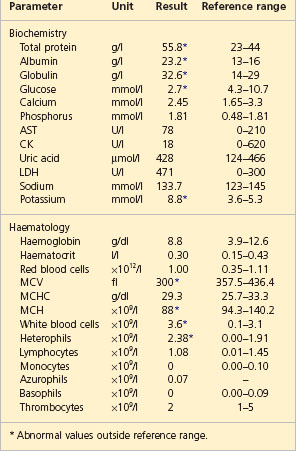18 Osteomyelitis in a Hermann’s tortoise
Introduction
CASE PRESENTING SIGNS
A 53-year-old male Hermann’s tortoise (Testudo hermanni) (Box 18.1) presented with loss of nails (onychomadesis) from both forefeet.
BOX 18.1 Ecology of Hermann’s tortoises
Clinical Examination
Initial Case Work-Up
Blood sample
Since two limbs were affected and systemic disease is common in ageing tortoises, haematology and biochemistry tests were performed as a general health check (Box 18.2). The sample also gave information regarding some of the differential diagnoses listed above (Table 18.1):
BOX 18.2 Phlebotomy in tortoises
Jugular vein

Figure 18.1 Venous access to the jugular vein in a tortoise (here, to induce general anaesthesia using alfaxalone).
Radiography
The tortoise was amenable to positioning and the sites of interest on the limbs were distal, so radiography was performed conscious. Initially dorso-ventral radiographs were taken of the distal limbs (Fig. 18.5a,b).
Stay updated, free articles. Join our Telegram channel

Full access? Get Clinical Tree



